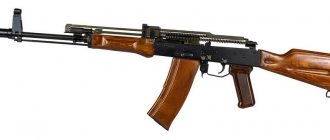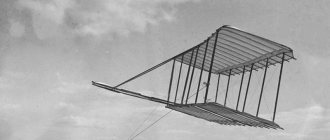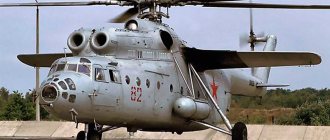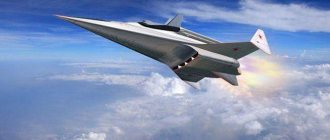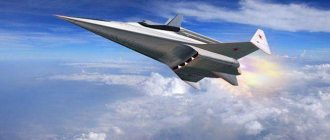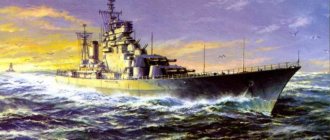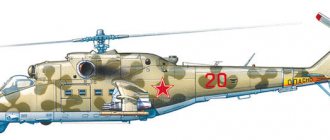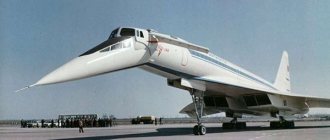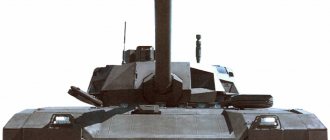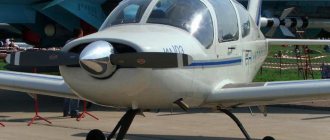An unsightly and ugly attack aircraft, but it is the one the American military calls for reinforcements. It carries formidable weapons, including the most powerful Gatling-type aircraft gun in US aviation, capable of firing 70 rounds per second. Breaking the mold of sleek, high-speed design, the Fairchild Republic A-10 Thunderbolt II redefined close air support.
It has caused more controversy than any other military aircraft. Every component of the stormtrooper was a radical and fundamental innovation. The plane's hardest battle was against the people who gave birth to it. The US Air Force had no intention of adopting the A-10, or "Warthog" as it was called.
History of creation
The birth of the Thunderbolt II A-10 in the world of military aviation occurred in the last year of the Vietnam War. The clash of military technologies in Vietnam and the increased political confrontation with the Soviet Union, which at any moment was ready to escalate into a large-scale military conflict, served as the reason for updating the military aviation fleet of the US Air Force.
The upgraded F-100/101/105 tactical aircraft, capable of carrying a nuclear warhead, were not suitable for supporting ground forces on the battlefield. Local clashes revealed the need for a completely new front-line aviation.
The modernized training T-28 “Troyan” used in tropical forests for bombing was poorly suited for possible combat operations against USSR troops.
He was easy prey for the Soviet DShK machine guns, which marked the end of his military career.
The Pentagon realized that the battlefield needed a universal aircraft with powerful weapons that could destroy enemy military equipment and provide fire support to ground forces from the air. Among other things, the future attack aircraft was supposed to be a well-armored and safe aircraft for the pilot.
By the mid-1960s, military factories of the Soviet Union began to mass produce new generation tanks T-60 and T-64. For the first time, the amphibious, tracked combat vehicle BMP-1 appeared, which has no analogues in the countries of the NATO alliance. New USSR equipment with increased armor protection and powerful weapons quickly entered the troops and the countries of the socialist camp.
Western countries were seriously alarmed by the possible aggression of the socialist camp.
The march of a tank armada to the English Channel, with the destruction of the infrastructure of European cities, seemed quite realistic. It was also noteworthy that the tank formations of the Soviet Union reliably covered the Shilka anti-aircraft self-propelled guns, which took part in the Vietnam War and successfully fought against US aircraft.
It was impossible to delay the production of a multi-role attack aircraft. By the mid-1960s, American designers began developing a new aircraft codenamed Project A-X. Having studied the diagrams and drawings of aircraft of the Second World War, the concept of the machine was determined. It was an armored aircraft with subsonic speed.
As part of the competition, the organizers sent technical specifications to 21 US airlines. The military ordered an aircraft with the following characteristics:
- Speed 650 km/h;
- High maneuverability at low altitude;
- Built-in cannon complex;
- Significant load of aerial bombs.
Operation assumed deployment at unpaved airfields, so the takeoff and landing parameters had to meet this request.
The Vietnam conflict was coming to an end. American troops did not shine with victories. According to the plan of the Western Air Force, the new aircraft was to be used during a possible conflict in the European part. By 1970, the US military had decided on the type of firearm that should be equipped with the future attack aircraft.
The standard weapon was the seven-barreled 30mm Avenger GAU-8 air cannon, a Gatling type gun.
In 1972, two design companies came to the final confrontation: Fairchild Republic and Northrop. The first company flew its prototype YA-10A in May 1972. And the second, twenty days later, tested its prototype YA-9A.
Comparative test flights were carried out from October 1972 to May 1973 at Wright-Patterson Air Force Base. The new aircraft turned out to be worthy opponents, and each of them claimed victory.
The YA-10A prototype showed high maneuverability, and its competitor YA-9A turned out to be unpretentious in maintenance.
The appearance of the tested models varied significantly; 10A amazed the commission with its original design. The non-standard appearance compensated for the design feature by the increased survivability of the aircraft.
The second sample 9A had a high-wing hull; following the classic layout, it resembled the USSR Air Force Su-25 attack aircraft.
In the battle of prototypes, the winner was 10A, the brainchild of Fairchild Republic.
She was instructed to produce ten pre-production attack aircraft. In February 1975, the first of ten pre-production attack aircraft made a test flight. By the end of 1975, serial production of Warthog began and ended only in 1984.
3.Sukhoi Su-35 (Russia)
The aircraft, which opens the top three among the best military fighters in the world, requires special attention, because it will form the backbone of the aviation wing of our country’s permanent military base in Syria. The secrecy of production for a long time forced potential buyers to avoid investing in a risky project, but participation in combat operations, where the Su-35 covered the main attack forces of the Russian Aerospace Forces, attracted a lot of attention to it. Considering that the aircraft is an extremely thorough modernization of the Su-27 (this is evidenced by the identical airframe), the fighter serves as proof of the durability of domestic military equipment, and also speaks of following traditions in aviation. Unfortunately, information about participation in exercises or battles with the enemy was not presented to the public.
Design
The A-10 Thunderbolt II is a single-seat aircraft with two high-mounted jet engines located toward the rear of the fuselage. The straight trapezoidal wing and subsonic speed allow it to maneuver over the battlefield for a long time. The hardpoints under the wings and fuselage are capable of carrying an entire arsenal of guided and unguided weapons.
Airplane glider
The fuselage is made in the form of a semi-monocoque. In the bow there is a pilot's cabin with a canopy shifted forward and down for good visibility. Under the cockpit there is a block of aircraft cannon barrels. Behind the center section, two engine nacelles with engines are attached to the upper part of the fuselage.
The upper placement of the power plant allows for better air flow during attacks from different angles. The exhaust gases pass over the horizontal tail surface, thereby reducing thermal radiation for infrared-guided weapons. Tail shape with double vertical fins and rudders.
Chassis
The chassis system is made in the form of a three-legged structure with a bow-mounted rotary wheel. The two main supports are located outside the center section. During takeoff, they are retracted into a special niche using a hydraulic drive. The lever mechanism folds the landing gear perpendicular to the axis of the aircraft body against the movement.
The retracted wheels protrude 1/3 beyond the contours of the body; this position will help make an emergency landing.
The front landing gear is shifted to the right from the center of the aircraft by 40 cm, due to the air cannon located at the bottom of the fuselage. The front landing gear mechanism is lever, the wheel is completely retracted into the compartment. Tire pressure 4 kgf/cm2, for use on unpaved airfields.
Power point
The A-10 Thunderbolt II is powered by two General Electric TF34-GE-100 turbojet engines, developed by GE Aircraft Engines in the late 1960s. The engine design has a single-stage fan controlled by a four-stage reduced pressure turbine.
Engine weight 654 kg. The first production engine took the plane into the air in 1971. In addition to military aviation, the aeroengine is used in civil aircraft under the designation CF34.
Fuel system
The fuel tanks of the attack aircraft are protected. To prevent ignition of fuel vapors, they are filled with anti-explosion foam. Two fuel tanks are located in the fuselage, and a pair are located in the wing. A full tank holds 4840 kg of fuel.
The design of the "Warthog" provides for the installation of three outboard fuel tanks with a total capacity of 2280 liters.
Among other things, the A-10 is capable of in-flight refueling using a specialized fuel receiving system.
Pneumatic system
The air supply system serves to condition the pilot's cabin, prevents icing, and provides the necessary ventilation for the compartment with the aircraft gun.
Hydraulic systems
The aircraft uses a hydraulic system with independent pumps. They operate from aircraft engine drives and provide system pressure of over 200 kgf/cm2. The hydraulic system is responsible for the operation of the aircraft control system, landing gear mechanisms, and rotation of the aircraft gun barrel.
Fire protection system
To extinguish a fire, an automatic system using a refrigerant - freon - is used.
Electrical equipment
The A-10 attack aircraft has two alternating current generators with an output voltage of 120/200V. The installed 34 A/h battery with a voltage of 24 V can serve as an emergency power source.
In addition to the standard power supply circuit, the aircraft has an autonomous generator.
Navigation and radio-electronic equipment
The A-10 aircraft is equipped with a TACAN AN/ARN-84 navigation system and a LORAN C/D AN/ARN-101 radio station, capable of maintaining radio communications at a considerable distance. The equipment contains: direction finder DF-301E/DA and compass AN/ARA-50. The CPU-16 system calculates aerodynamic parameters.
AN/UPN-25 radar equipment facilitates recognition by radar systems. To all of the above, it is worth adding that the Warthog is equipped with an autopilot and the AN/ARN-108 system for landing in bad weather conditions based on instrument readings.
2.F-22 Raptor (USA)
Multifunctional, economical, effective - in general, this is the best fighter produced in the United States. From 2014 to today, he has formed the backbone of the Air Force in Syria, where, having begun the fight against radical Islamists, he continues to create significant problems for IS troops. A noteworthy case is when the pilot, in one combat mission, not only completed a combat mission, but also remained in a certain area for another six hours, while not being noticed by enemy forces and transmitting the coordinates of the enemy positions who were trying to evacuate the base. Over the past two years, the F-22 has successfully completed approximately 210 combat missions. The entire operational period includes only two cases of loss during conflict, which indicates the high quality and reliability of the Raptor.
Armament
The standard weapon is the seven-barrel Avenger GAU-8 air cannon with a caliber of 30 mm. The ammunition load is 1350 shells. It includes shells for various purposes, including armor-piercing shells with a depleted uranium core, which became infamous after Desert Storm.
The cannon itself is the most powerful aircraft weapon, but at the same time, it is precisely because of it that the aircraft cannot be modernized and re-equipped to perform other tasks.
In practice, this is the case when an attack aircraft is built around a cannon, which in modern warfare has lost its combat significance - its place has been taken by NURS and guided missiles.
It is worth noting that just to reload the cartridge belt to the attack aircraft, a special vehicle and a crew of a dozen people are required.
The suspended arsenal consists of 6 to 12 guided missiles AGM-65A and AGM-65B, with television homing. The maximum target detection range is from 11 to 13 km, depending on weather conditions.
AGM-65D guided missiles have the same operating principle as the AGM-65A or AGM-65B, only they are used at night.
To attack the enemy in air combat, AIM-9 missiles are used. As an additional option for small arms, it is possible to install two Vulcan M61 air cannons with a caliber of 20 mm on the suspensions.
5. Sukhoi Su-30 (Russia)
The most reliable domestic aircraft is located at the equator of the ranking of the best military fighters in the world. He repeatedly proved his superiority during the exercises. Forming the backbone of the Indian Air Force, the Su-30 defeated American and British competitors in training battles, and in most cases, dryly. Also, it was Sukhoi that ensured the success of the operation of the Russian military space forces in Syria, and played a decisive role in the liberation of Palmyra. Over a quarter of a century, only 9 incidents were recorded, most of which were caused by an engine fire or insufficient fuel; fortunately, there were no military casualties, with the exception of a Vietnamese Air Force plane crashing into the sea.
Modifications
- YA-10A - first models of two prototypes;
- A-10A – the main serial production aircraft;
- OA-10A – the letter “O” in the index means Observation. Used for various types of search operations. The main part of the outboard weapons is not used, but at the same time the famous Gatling remains in place. Aircraft converted under this project are not recommended for use in combat operations;
- YA-10B is a two-seater aircraft designed to operate in various weather conditions. Built in a single copy;
- A-10C is a modified model of the serial A-10. Digital technologies are used in the design of electronic equipment. The weapon is equipped with a high-precision laser sight.
8.MiG 35 (Russia)
Although prototypes have not yet taken part in combat operations, and its commissioning is planned for 2022, it has already incorporated the leading developments of domestic engineers. Compared to its predecessor, it will become more economical in terms of fuel consumption, but at the same time, it will create more conditions for pilot comfort: from automated flight control during aiming to an increased volume of air created by an autonomous oxygen station. The only fly in the ointment, in our opinion, is the too early attempts of the Russian Ministry of Defense to involve it in international tenders, because the radar and some equipment are still not brought to ideal condition. A positive feature of this model is the cost of production; for example, the French produce aircraft with similar characteristics at two to three times the price.
Tactical and technical characteristics in comparison with analogues
| A-10 Thunderbolt II | Su-25K | |
| Years of manufacture | 1975-1984 | 1978-2017 |
| Length, m | 16,25 | 15,35 |
| Height, m | 4,50 | 4,8 |
| Wingspan, m | 17,55 | 14,36 |
| Wing area, sq/m | 47 | 30,1 |
| Empty weight, kg | 9175 | 9315 |
| Curb weight, kg | 10515 | 11600 |
| Maximum take-off weight kg | 21150 | 17600 |
| Maximum speed, km/h | 830 | 950 |
| Cruising speed, km/h | 555 | 750 |
| Practical ceiling, m | 13380 | 7000 |
| Flight range, km | 740 | 640 |
| Standard weapons | seven-barreled air cannon GAU-8/A with 1350 30×173 mm shells | double-barreled air cannon GSh-30-2 with ammunition capacity of 250 30-mm shells |
| Crew | 1 | 1 |
1.Sukhoi T-50 (Russia)
The palm in the ranking and the title of the best military fighter in the world goes to the Sukhoi T-50 - the first domestic fifth-generation aircraft capable of simultaneous combat with several opponents located both in the sky and on the ground. This was made possible thanks to increased maneuverability and advanced technology. Even Western experts praised the first steps of Russian engineers in creating fighters with stealth reduction technology, but in practice it is not possible to draw any solid conclusions: all tests are carried out behind closed doors, and the final configuration of the prototype will be presented only in a year and a half.
Combat exploitation
The A-10 attack aircraft received its first baptism of fire in the 1991 military conflict off the coast of the Persian Gulf. The total number of aircraft of this type involved was 144 units. During the Gulf War, Warthogs completed more than 8,100 combat missions. Seven aircraft were lost in battle and 15 were seriously damaged.
According to observers, the A-10 attack aircraft made a worthy debut in a military conflict and were not inferior in courage to the F-15 fighters and the high-tech stealth tactical strike aircraft F-117A. It was announced from official US Air Force sources that A-10 Thunderbolts destroyed more than 1,000 tanks, 2,000 armored vehicles and 1,200 artillery barrels of the Iraqi army.
The real test for Thunderbolt II was Operation Desert Storm.
One of the A-10 aircraft received wing damage incompatible with survivability, but it managed to return to its base. Any other aircraft would not have survived this damage and most likely would have died.
The disadvantage of the A-10 was its susceptibility to mistakenly attack its targets. He categorically should not have hunted near his military units.
In the battle for Ras al-Khafji, the Warthog destroyed an LAV-25 armored vehicle with ten US Marines with an AGM-65B missile; in fairness, it is worth noting the similarity of its silhouette with the BTR-70 used by Iraqi troops. Ten months later, an A-10 attack aircraft launched a missile attack on British armored vehicles, killing 9 people.
At the same time, the extremely low efficiency of using attack aircraft at night was noted.
10. Dassault “Mirage” 2000 (France)
French aviation has noticeably improved since the Second World War, when it was completely destroyed by the German army. Attempts to conduct an independent foreign policy required a strong army, so 30 years ago the Mirage military aircraft appeared, which immediately became the main fighter of the French Air Force and did not give up this position for two decades, because it performed excellently in peacekeeping operations in North Africa, as a result of which began to be purchased en masse by India. It was in this region that he found himself: the successful destruction of enemy aircraft and headquarters, as well as guided missile attacks, broke the rebel resistance in a couple of days. According to some reports, despite being discontinued in 2006, Dassault 2000 participated in the Libyan War, where it caused stunning damage to the military equipment of Gaddafi's army.
+Sukhoi Su-27 (Russia)
We could not ignore the best Soviet fighter, which is still in service both in post-Soviet countries and among allies in the communist camp, because it is one of the ten fastest aircraft in the world. It is noteworthy that the Su 27 becomes a participant in any computer flight simulator. Also, this aircraft is the only domestically produced fighter that took part in hostilities in Central Africa, where it neutralized 3 enemy aircraft without loss, and the only identified disadvantage is the rather high fuel consumption during afterburner.
Related Posts
Top 10 Fastest Planes in the World
Top 10 largest submarines
Top 10 The best and most powerful tanks in the world
